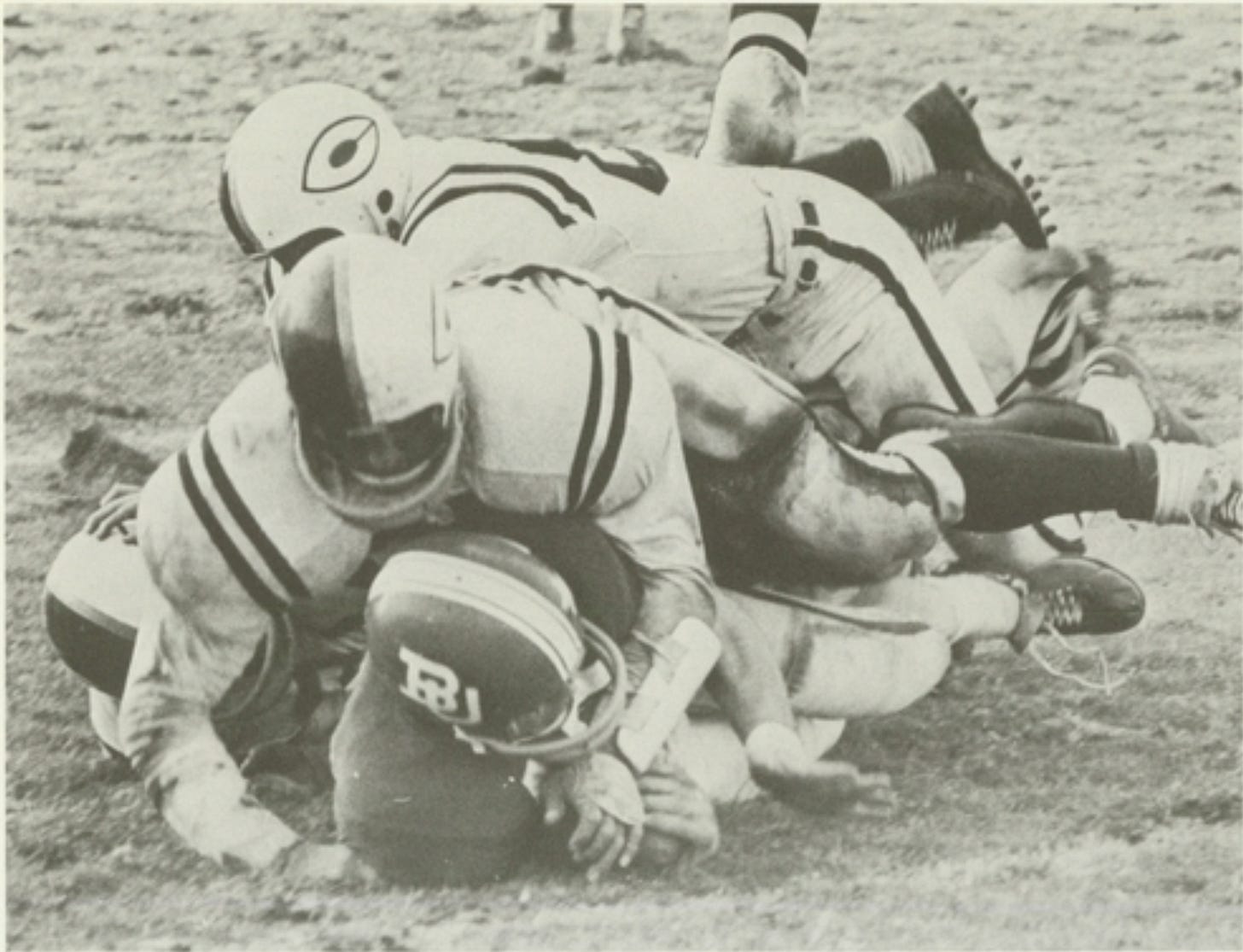Today's Tidbit... Factoid Feast VIII
As discussed in Factoid Feasts I, II, III, IV, V, VI, and VII, my searches through football history sometimes lead to topics too important to ignore but too minor to Tidbit. Such nuggets are factoids, three of which are shared today.
Am I Blue?
Earlier this week, I wrote a story about the Boston University football program, which led me to review some old Terrier yearbooks. One had the image below of several UConn players tackling a BU player.
As seen in the image, Connecticut could not decide whether to wear blue or white helmets in 1965, so they chose to wear both.
This small act gave UConn the distinction of having the ugliest blue thing in football until Boise State installed its blue field.
Football's White Lines
For many years, the NCAA rulebook was the law for all levels of football, so the 1928 NCAA rulebook applied to high school, college, and pro football. Rule 1 described the various lines that defined a football field, and Section 2 of the rule informed everyone that those lines should be white.
Of course, the rule makers did not anticipate the problem faced on Thanksgiving Day in Dover, New Hampshire, when Dover High prepared to play Rochester at Central Park. A recent snowstorm left the field covered in white, making white stripes nearly invisible, so the good people of Dover lined the field with coal dust, allowing the boys from Dover to prevail 13-6.
No information is available regarding who laundered the uniforms or the challenges they faced.
The Prisoner's Dilemma
Alexander Cooper attended Bellevue College in Nebraska and played on the football team for his first three years, from 1901 through 1903. With two courses left to complete for his degree, he scheduled those classes at Bellevue while also entering medical school at Creighton in the fall of 1904.
Bellevue and Creighton had a football game scheduled that year, so the Creightonians agreed that Cooper could play for Bellevue in all games except against Creighton. While Creighton thought they had an agreement, Bellevue's management thought otherwise and submitted Cooper’s name on the roster for the upcoming game.
Creighton students kidnapped Cooper at the end of Friday classes at the medical school to prevent his playing. They shackled and handcuffed him, but he escaped while being moved, was recaptured, and held overnight. Before being recaptured, Cooper telephoned a Bellevue friend to inform him of the day's events.
On Saturday morning, the Bellevue president demanded Cooper's release as a condition of allowing the game to be played, so Creighton released Cooper. Some reports suggested he was treated poorly during confinement, resulting in his being unable to play in the game. Whatever the conditions, the box score shows Cooper did not appear in the Bellevue lineup as Creighton emerged victorious 13-0.
Football Archaeology is reader-supported. Click here to buy one of my books or otherwise support the site.






Love the story of the ingenuity of using what they had available in coal dust on the snow! I officiated some snow games on grass fields where yellow and orange lines were used. Neither worked well as they disformed as the snow turned to slush and water. It was also in the days of wearing white knickers and yellow and orange on white pants is a laundry nightmare for players and officials.